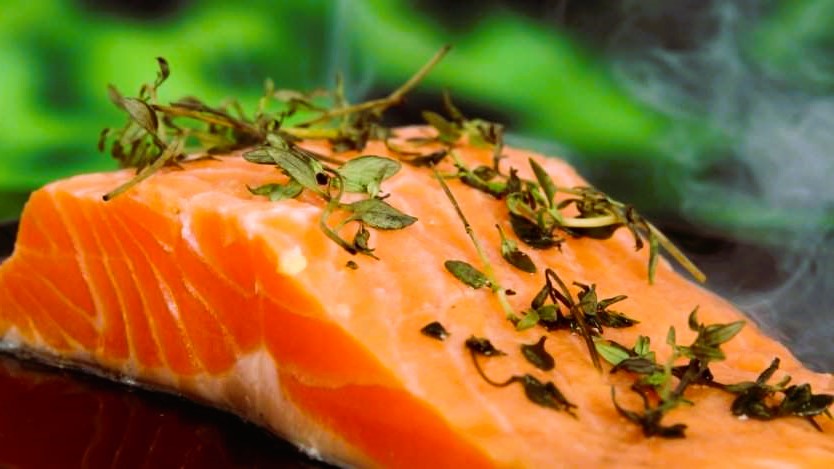Canadian cuisine is a reflection of the country’s rich history, diverse cultures, and abundant natural resources. From its indigenous roots to the influences of early settlers and immigrants, Canadian cuisine has evolved into a delightful tapestry of flavors, showcasing a unique blend of traditional dishes and modern innovations. Join us on a culinary journey as we explore the evolution of Canadian cuisine, from its humble beginnings to the exciting modern delights that grace the tables of the Great White North.
Indigenous Roots: The Original Flavors of Canada
Long before European explorers arrived on Canadian shores, the indigenous peoples of the land were thriving on a diet rich in local ingredients. Indigenous cuisine celebrated the bounty of nature, incorporating game meats, fish, berries, and edible plants into their meals. Techniques like smoking, drying, and preserving were used to ensure a stable food supply during harsh winters.
Traditional dishes like bannock, a type of bread, and pemmican, a dried meat and fat mixture, were staples in indigenous diets. These early culinary traditions laid the foundation for the future evolution of Canadian cuisine.
European Influence: The Arrival of New Flavors

The arrival of European settlers in the 16th century brought a significant shift in Canadian cuisine. European flavors and cooking techniques intertwined with indigenous ingredients, creating a fusion of culinary traditions. The French, British, and Irish settlers introduced new ingredients like wheat, dairy products, and spices, enriching the gastronomic landscape.
One of the most iconic dishes from this period is poutine, a beloved Canadian comfort food. Originating in rural Quebec, poutine consists of crispy fries topped with cheese curds and smothered in gravy—a delightful combination that has become a symbol of Canadian cuisine.
Immigrant Influence: A World of Flavors
In the 19th and 20th centuries, Canada experienced waves of immigration from various parts of the world. Each new group of immigrants brought their culinary heritage, leading to a diverse array of flavors and dishes that shaped Canadian cuisine.
The influence of Italian, Chinese, Greek, and other immigrant communities can be seen in the abundance of international restaurants and the incorporation of global ingredients into Canadian cooking. Dishes like butter chicken, sushi, and falafel have become as quintessentially Canadian as maple syrup. Interested in cooking? Read also about the role of spices in world cuisine, in the article the world of aromas and tastes.
The Rise of Modern Canadian Cuisine
In recent decades, Canadian cuisine has experienced a culinary renaissance, gaining recognition on the international stage. The emergence of modern Canadian cuisine is characterized by a focus on local, seasonal ingredients and a celebration of the country’s vast regional diversity.
Farm-to-table dining has become a cornerstone of modern Canadian cuisine, with chefs sourcing ingredients from nearby farms and artisanal producers. The emphasis on sustainability and ethical sourcing aligns with the growing awareness of environmental impact and the desire to support local communities.
Celebrity chefs, such as Michael Smith, Susur Lee, and Vikram Vij, have played a crucial role in elevating Canadian cuisine, showcasing the country’s culinary talents to a global audience.
Exploring Canada’s Culinary Regions
Canada’s vast geographic expanse has given rise to distinct culinary regions, each with its own local specialties and flavors:
- Atlantic Canada: Known for its seafood delights, including lobster, scallops, and Atlantic salmon, as well as traditional dishes like fisherman’s stew and rappie pie.
- Quebec: Famous for its poutine, tourtière (meat pie), and maple syrup treats, reflecting its French heritage.
- Ontario: Home to vibrant food markets, farm-to-table restaurants, and diverse ethnic eateries that showcase the province’s multiculturalism.
- Prairies: Renowned for its hearty dishes like bison burgers, Saskatoon berry pie, and perogies, reflecting its agricultural roots.
- British Columbia: Celebrates its Pacific coast bounty with fresh seafood, Pacific salmon, and innovative fusion cuisine.
Standardization and Quality Assurance

Canada’s food industry adheres to strict standards and quality assurance practices to ensure the safety and integrity of the country’s culinary offerings. The Canadian Food Inspection Agency (CFIA) plays a vital role in regulating food safety, from farm to fork, and sets standards for the food industry. These standards are designed to protect public health and maintain the quality of Canadian cuisine.
Furthermore, the Invasive Species Council of British Columbia (ISCBC) focuses on preserving the balance of ecosystems by raising awareness about invasive species that can impact local flora and fauna. This conservation effort is essential for safeguarding the native ingredients and biodiversity that contribute to the diversity of Canadian cuisine.
Embracing Diversity: A Culinary Melting Pot
Canadian cuisine has evolved into a delightful fusion of indigenous, European, and immigrant influences, resulting in a diverse and exciting culinary landscape. The appreciation for local and seasonal ingredients, the commitment to sustainability, and the celebration of cultural diversity have become defining features of modern Canadian cuisine.
Whether you’re indulging in a classic dish with indigenous roots, savoring the flavors of immigrant-inspired cuisine, or delighting in the innovative creations of modern chefs, Canadian cuisine offers a culinary journey that reflects the rich tapestry of the nation’s history and the spirit of its people.
So, take a seat at the table and embark on a mouthwatering adventure through the evolution of Canadian cuisine—where traditional and modern delights harmonize to create a culinary experience like no other.
References:




